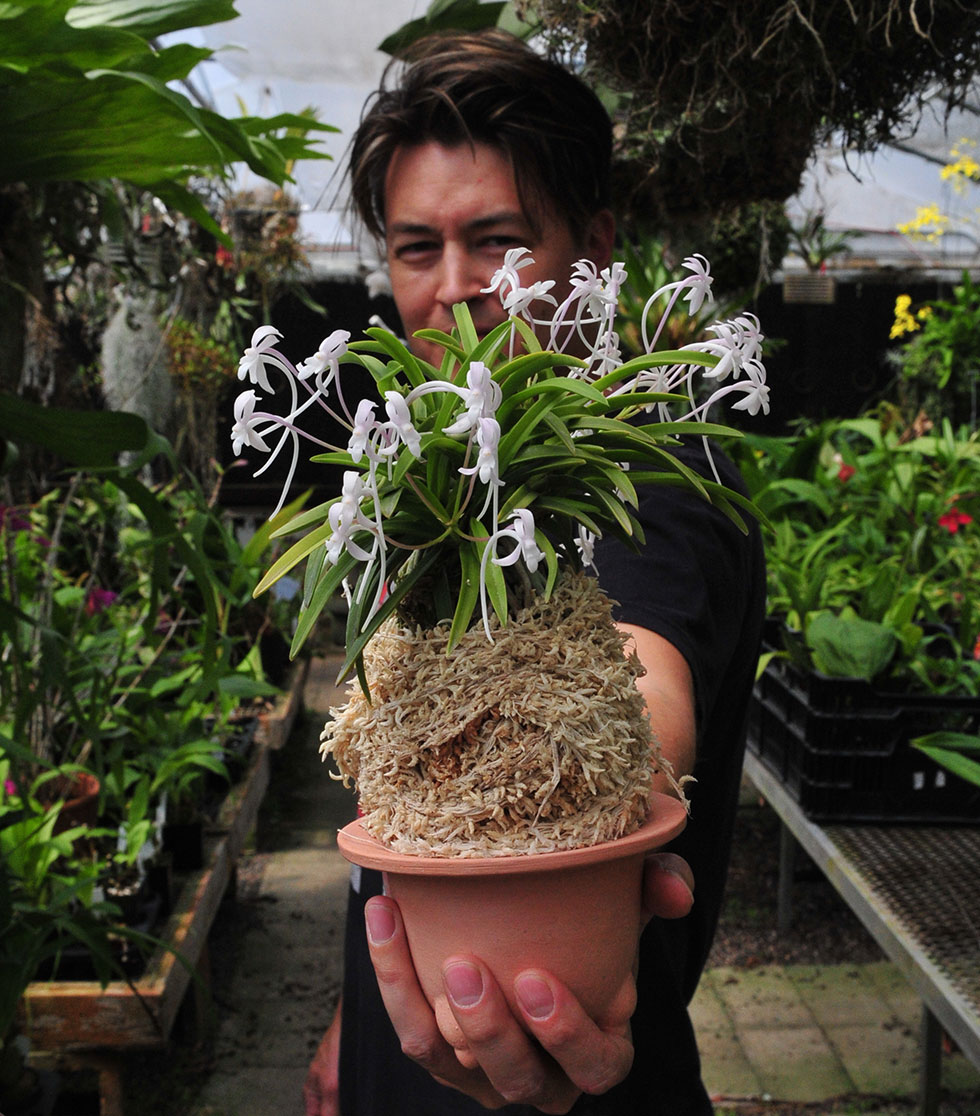Neofinetia
A Beautiful Orchid Species You Need to Know About: Neofinetia
While orchids are known for their beauty, some are easier to care for than others. Neofinetia orchids, also known as Vanda falcata or Samurai orchids, is one such species that has won the hearts of many orchid enthusiasts. However, like all plants, neofinetia comes with its own set of challenges. Understanding how to care for this unique orchid is important to keep it blooming year-round.
Before we dive into the target of neofinetia, let's talk about common pain points you may encounter. Leaves and blooms can wither, turn brown, and dry out. Fungal and bacterial infections can occur, especially in high humidity. Orchid roots can also rot from overwatering and poor air circulation, which Neofinetia orchids can be prone to. These factors can lead to stunted growth and death of the plant altogether.
Despite challenges, neofinetia is a rewarding orchid species known for their fragrant, delicate flowers, lush green foliage, and miniature size. They are native to parts of East Asia, grow upwards, and prefer cool temperatures and high humidity. So, what is the target of neofinetia?
The target of neofinetia is to provide the optimal growing conditions that mimic their natural environment. These include providing bright, indirect light, temperatures between 60-80°F (15-27°C), high humidity of 60-80%, and a well-aerated growing medium. Choosing the right potting material, watering correctly, and fertilizing conservatively are also important factors to keep in mind.
My Neofinetia Experience: From the Struggle to Blooming
When I first started growing neofinetia, I struggled to keep it alive. The leaves wilted, the roots rotted, and blooming was out of the question. After much research and trial and error, I learned that neofinetia demands a specific growing medium and potting conditions. I switched from sphagnum moss to a blend of charcoal, pumice and barkchip and I also changed my watering frequency, now only watering when the substrate was dry. Within a few months, my orchid started to thrive. Its leaves became vibrant, and it began to grow flower spikes. Now, I can proudly say I have it blooming year-round, with fragrant flowers that fill the room.
The unique characteristics of neofinetia make it a highly desirable species among orchid growers and collectors. Their compact size allows for easy display on windowsills or in terrariums. If you're looking for a gorgeous, long-lasting, and easy-to-maintain orchid, neofinetia might just be what you are looking for!
Optimal Growing Conditions for Neofinetia Falcata
To ensure a healthy and flourishing neofinetia orchid, the following conditions must be met:
- Light: Bright, but indirect light, 12-16 hours a day, preferably filtered through a shade cloth or sheer curtain.
- Temperature: Optimal temperatures range between 60-80°F(15-27°C), while nighttime temperatures should be 10-15°F cooler than daytime temperatures.
- Humidity: High humidity, preferably between 60-80%. To maintain high humidity levels, consider using a humidifier or placing a humidity tray filled with rocks and water below the pot.
- Air circulation: Neofinetia demands good air circulation to prevent fungal and bacterial infections. A fan can help improve air circulation.
- Potting material: a mix of orchid bark, charcoal, and pumice is ideal for neofinetia. It provides excellent drainage while promoting airflow to the roots.
- Watering: Neofinetia is sensitive to overwatering and prefers a well-draining medium. Only water when the substrate is dry to the touch.
- Fertilizing: Fertilize only during the growing season and dilute the fertilizer to half strength. Avoid salt buildup in the soil by flushing the pot with clean water every few months.
How to Repot Your Neofinetia Orchid
It's important to repot your neofinetia orchid every year or so once it has outgrown its current pot. Here are a few steps to follow:
- Water your orchid a few days before repotting it.
- Remove the orchid from its current pot.
- Trim any dead or decaying roots.
- Prepare the new pot with fresh potting material.
- Securely place the orchid into the new pot and fill it with fresh potting material.
- Water the orchid and place it in a shaded area for a few weeks until it adjusts.
Caring for Blooming Neofinetia Orchids
Once your neofinetia orchid is blooming, it's important to take extra care to ensure the blooms last as long as possible. Here are a few tips:
- Protect the flowers from direct sunlight, which can cause them to wilt.
- Provide ample humidity to prevent flowers from drying out.
- Avoid moving your orchid around too much, as this can cause the blooms to fall off.
- Protect your orchid from pests such as mealybugs, spider mites, and scale. Use insecticides or insecticidal soap to keep it pest-free.
Question and Answer about Neofinetia
Q: How often should I water my Neofinetia orchid?
A: It's important to water your neofinetia orchid only when the substrate is dry. Depending on the environmental conditions, you can water them 1-2 times a week.
Q: Why is my Neofinetia orchid not blooming?
A: Neofinetia orchids need the right amount of light and temperature changes to bloom. They also require a well-draining potting medium and fertilizing during the growing season.
Q: Can I grow neofinetia orchids indoors?
A: Yes, neofinetia orchids grow well indoors and are ideal for small spaces due to their compact size.
Q: What is the best fertilizer for neofinetia orchids?
A: A balanced fertilizer at half-strength is ideal for neofinetia orchids, one that contains equal amounts of nitrogen, phosphorus, and potassium.
Conclusion of Neofinetia
Neofinetia orchids may seem challenging to care for, but with the right conditions and a little patience, they can thrive, bloom year-round and make lovely additions to your indoor garden. Use the growing conditions and care tips mentioned above to help your plant flourish. Whether you are new to orchid growing or a seasoned enthusiast, neofinetia orchids are a rewarding and stunning species that will not disappoint.
Gallery
Neofinetia Falcata JUNIHITOE | Orchids, Plants, Botanical

Photo Credit by: bing.com / neofinetia falcata junihitoe ru
Neofinetia Falcata: Help! What's Wrong With It? :'( : Orchids

Photo Credit by: bing.com / neofinetia falcata wrong help orchids
Neofinetia Falcata Care Sheet - New World Orchids
Photo Credit by: bing.com / neofinetia care falcata orchids newworldorchids
The Growing Popularity Of Neofinetia Falcata - OrchidWeb

Photo Credit by: bing.com / neofinetia falcata popularity growing orchidweb
Neofinetia Falcata - Kogane Nishiki : Orchids

Photo Credit by: bing.com / neofinetia kogane falcata nishiki orchids orchid journey first neo